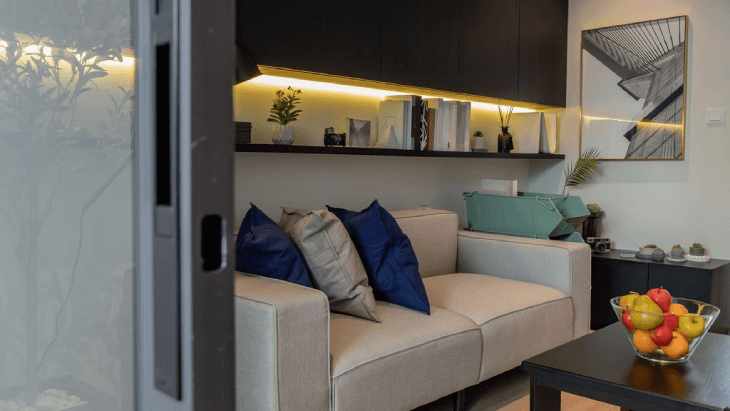No matter how much (or how little) space you have, you’ve always got room for clever design ideas. And when it comes to furnishing and fashioning a small room, there are a few golden rules to make the most of what you have.
Here, Victoria Harrison, editor of home renovation and design platform Houzz (houzz.co.uk), shares some top tips to ensure a small living room is big on style and function.
1. Create zones

“If your small living room also doubles as a dining, bedroom or work area, zoning can help it feel less cluttered,” says Ms Harrison. “Think about the space available, and list out any specific functions you need the room to have – such as seating. Then you can carve out the space into zones.”
She recommends using rugs, room dividers and open shelving to help break up the space.
Read: How to add a little luxury to your lounge room
2. Go bespoke for storage
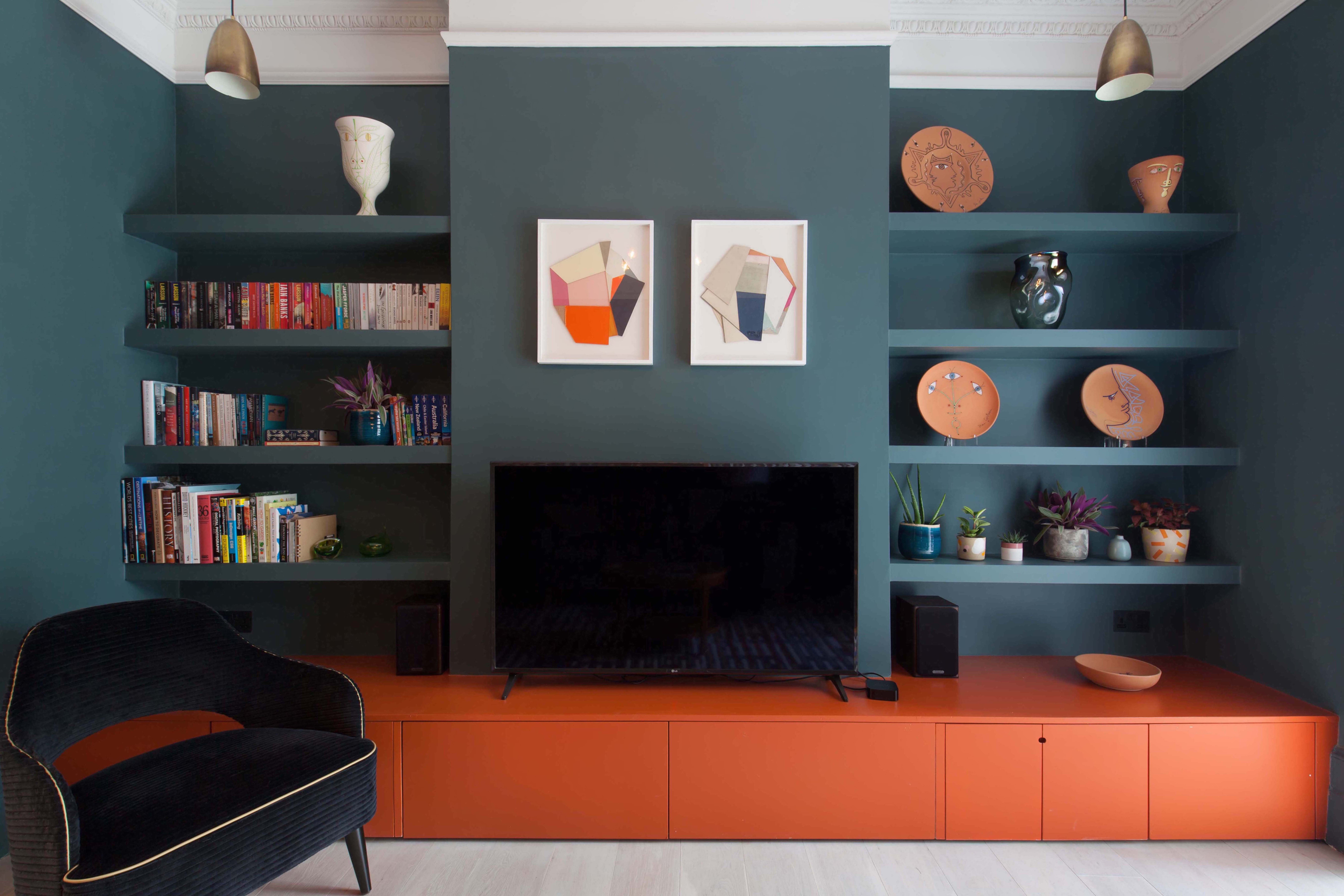
“To maximise storage in a small living room, it’s important to use every millimetre of space. Bespoke shelving and storage options will allow you to customise to the space you have available and utilise any awkward-sized alcoves,” explains Ms Harrison.
Plan storage wisely. Ms Harrison suggests “a balance of open shelving and closed cabinetry”, so you have the option of displaying some items without taking up too much space. “Painting storage in the same colour as your walls will also help it to recede into the background.”
3. Stay in proportion
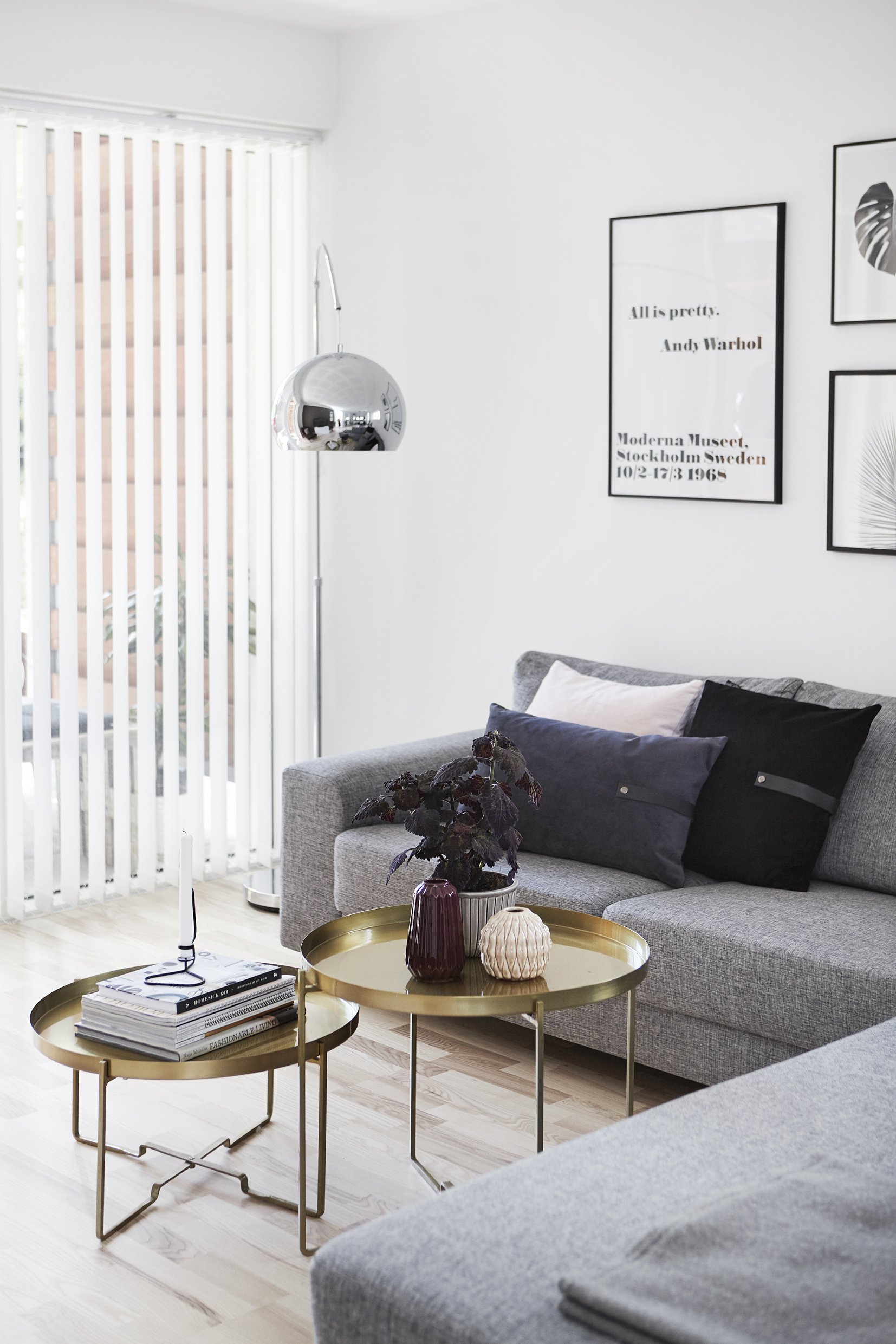
Ms Harrison says: “In a small room, a large sofa could dwarf the space and only accentuate the compact dimensions. Instead, choose a compact design that’s raised on legs to create a better sense of flow.
“The same logic applies for all furniture choices except rugs; a smaller rug can make a room feel cluttered, whereas opting for a larger design can give the illusion of a bigger space.”
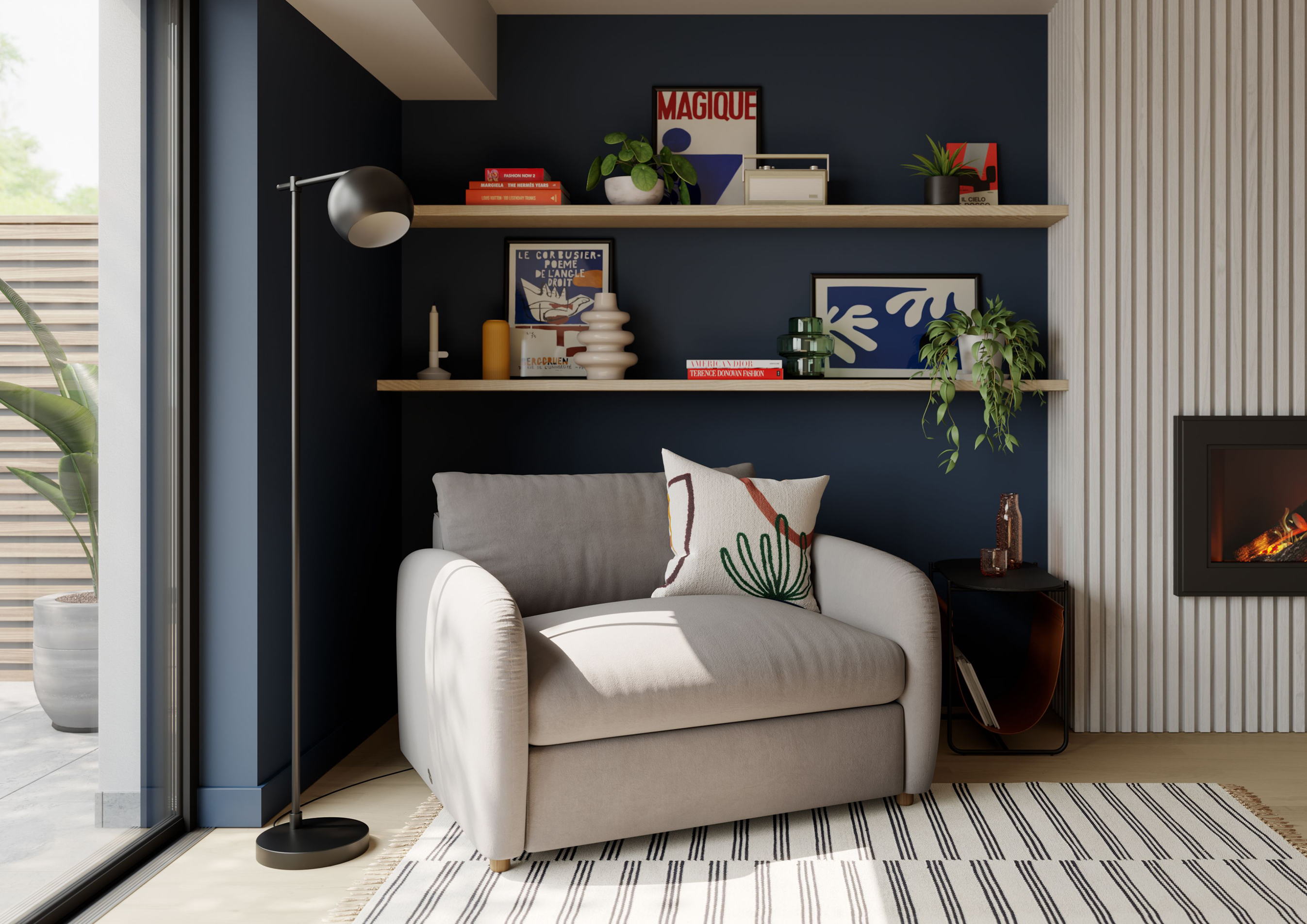
4. Layer up the lighting
“Lighting is a great tool for adding a feeling of depth to a small living room, as strategically placed lamps and wall lights can highlight different elements of the space,” says Ms Harrison. “By drawing the eye around the room in this way, you can create depth and shadow and distract from smaller proportions.”
You could even hide LEDs in the ceiling “to add ambience without seeing the source of the light”, she adds.
Read: Easy ways to improve the lighting in your home
5. Consider the paint colour
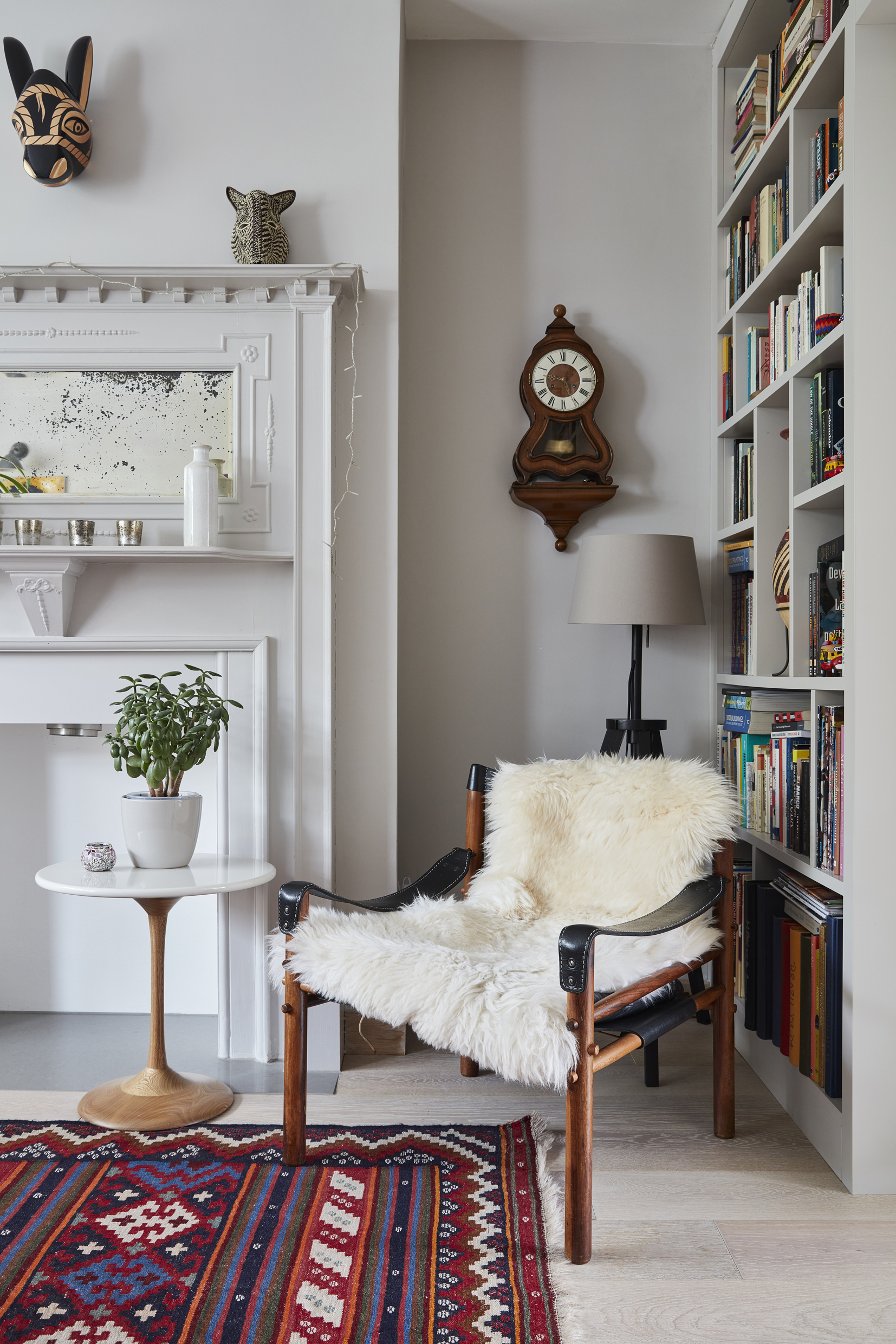
Ms Harrison says choosing the right paint colour is key in small living spaces: “As a rule of thumb, the brighter you can make the room, the larger it will feel. Opting for pale shades for the walls and using carefully placed mirrors can help to boost the light and open it up.
“However, if a room doesn’t benefit from plenty of light, white walls can make it feel dull. Designers aren’t afraid of embracing the petite size of a smaller room, often choosing to wrap the walls in a rich, dark tone, adding drama and creating a cosier feeling.”
Read: Key to happiness may be how older adults arrange their living space
6. Add a feature

“To distract from a room’s smaller proportions, add a focal point, like a large piece of artwork or beautiful light fixture that will give the room its own identity and take the focus away from the size,” advises Ms Harrison.
“If space permits, a built-in window seat would add more valuable storage and seating space, as well as creating a cosy spot to sit with a book.”
– With PA
If you enjoy our content, don’t keep it to yourself. Share our free eNews with your friends and encourage them to sign up.

